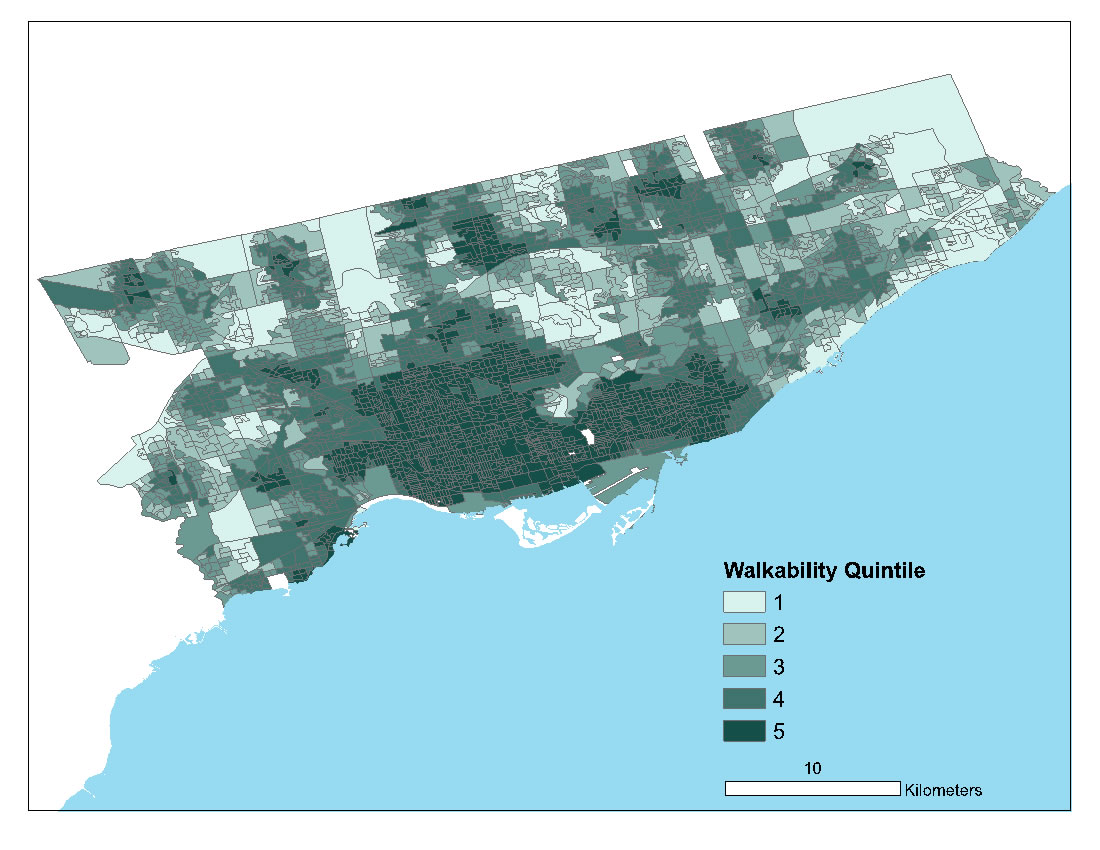Being able to walk to and from work, errands and your home is great, but you might not be getting all the health benefits you expect if your neighbourhood has a lot of air pollution, a new study suggests.

People who live in walkable neighbourhoods — where they can walk to accomplish daily tasks like grocery shopping or getting to work — tend to be more physically active than people who live in areas where they need to drive to do these same tasks. That extra physical activity from living in a walkable area has been linked to lower rates of obesity, hypertension and diabetes.
New research published in the journal Environment International suggests, though, that in areas with a lot of air pollution, some of those health benefits are being offset by the harm caused by the bad air.

The researchers examined nearly 2.5 million people who lived in the Greater Toronto Area, Ottawa, Hamilton and London, Ont., who were between the ages of 40 and 74. They found that while people who lived in highly walkable areas tended to have fewer diagnoses of hypertension and diabetes, if their neighbourhood also had a lot of air pollution, that effect was smaller — disappearing entirely in a few cases.
“Our findings confirm that walkability and air pollution are highly intertwined, potentially diminishing any health benefits derived from living in walkable, urban communities,” said Dr. Gillian Booth, a scientist at St. Michael’s Hospital’s MAP Centre for Urban Health Solutions and ICES in Toronto who co-authored the study.
“When we looked at areas that were walkable but had high levels of car-related air pollution, then we didn’t actually see any benefit at all in terms of the likelihood of being diagnosed with diabetes and high blood pressure.”
One reason might be all that time people are spending outside exercising, the paper suggests. “If you’re more active because you’re walking you might actually be bringing in more pollution because you’re breathing more deeply,” Booth said.
Areas with lots of air pollution tended to be along major roads and highways, and walkable areas tended to be in the urban core. Sometimes, as in parts of Toronto’s waterfront near the Gardiner Expressway, for example, the two overlap.
Dr. Christopher Carlsten, head of respiratory medicine and director of the air pollution exposure lab at the University of British Columbia, said he liked how the study examined multiple factors that affected people’s health.
“In this case, looking at both of them, and looking at their interaction, is really important because it gets closer to the real world,” he said.
Just a small increase in air pollution can have a big effect on Canadians’ health, given that we generally have fairly low pollution levels, he said.Air pollution isn’t just linked to hypertension and diabetes, he said, but also to heart failure, heart attacks and arrhythmia
The study only shows correlation and not causation, and only looked at people’s health in relation to where they live — not where they work or otherwise spend time, Booth noted. She hopes that further research will examine how people’s work locations contribute to their health.
Booth thinks that her findings suggest that urban planners need to take a holistic approach when they’re designing “healthy” neighbourhoods. “We need to make things more walkable and obviously we need to push people to be more healthy and to get more physical activity,” she said. “But then, to understand, what are the elements within neighbourhoods that can actually negate or mitigate these health benefits?”
WATCH: Rebuilding our neighbourhoods may help people get healthier: Canada health official

Ideally, Carlsten said, places where people walk shouldn’t be next to places where they drive. Just 300 metres away from a busy arterial road, air pollution drops significantly, he said.
“What we do, I think, in an ideal world is we should separate the walkable areas. In general, where people walk, we should separate that from traffic,” he said.




Comments